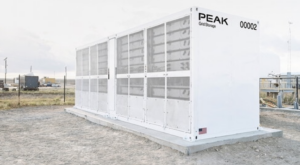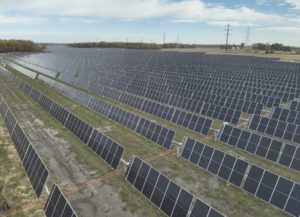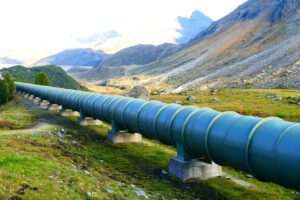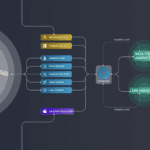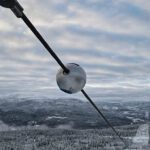Landsnet owns and operates Iceland’s power transmission system and is responsible for building and maintaining a secure and reliable electrical grid. Monitoring the grid in Iceland is uniquely challenging because of the country’s rugged, often inaccessible terrain and extreme weather conditions—particularly severe winds and sub-zero temperatures.
Between December 10 and 11, 2019, northern Iceland experienced a severe storm that caused heavy ice accumulation and strong winds, placing significant stress on our transmission lines. As a result, 40 towers failed, leading to an estimated outage cost of $40 million.
Just days later, on December 17, one of the main lines connected to Iceland´s largest hydropower plant suffered a mast collapse. The failure was traced to a defect in a component holding the conductor, potentially exacerbated by line galloping. While we narrowly avoided a complete outage, this incident underscored the urgent need for real-time monitoring. Had we been able to visually confirm the event as it unfolded, our team might have taken preventive measures to avoid the line’s failure altogether.
Pilot Project with Laki Power
A major obstacle to real-time monitoring in remote areas is the absence of a local power source to run cameras and sensors. Initially, we considered burying six kilometers of power cables just to supply electricity for icing detection. Instead, we chose Laki Power’s cost-effective LKX-201 system (now branded as LKX-MULTI), which harvests power directly from high-voltage lines.
In 2018, we launched a pilot project (Figure 1) with two primary objectives, which were to:
- Validate the reliability of the power-harvesting technology to energize communications equipment, cameras, line sensors, and a weather station.
- Gain real-time situational awareness in areas where we previously had no direct visibility.

Results and Impact
We selected Laki Power because its technology can be installed on existing infrastructure in remote areas with minimal complexity and cost—unlike other solutions that require more complicated and expensive setups. Beyond the simplicity of installation, we came to value the system’s ability to provide actionable insights on ice accumulation and localized weather data.
Although we did not face any catastrophic storms during the pilot, we did receive real-time video feeds (Figure 2) and alerts for galloping and icing—exactly the kind of events that caused the 2019 tower collapse. By spotting icing early, we could deploy maintenance crews promptly to remove the ice before it led to structural damage.

We considered the pilot a success based on the following factors:
- Enhanced Situational Awareness. For the first time, we could see real-time events on our lines and understand how conditions like galloping and ice loads were affecting them.
- Reduced Operational and Maintenance Costs. With real-time data, we prioritized and scheduled crew dispatches more effectively, focusing on areas experiencing critical conditions.
- Reliable Performance in Harsh Conditions. The system operated at temperatures as low as –30C, maintaining an uptime of 99.9%.
- Sustained Operation During Extreme Weather. It captured several high-wind events, including a Boom Cyclone with measured wind gusts up to 65 meters per second (145 miles per hour) and continued functioning afterward, demonstrating its durability when it mattered most.
Looking Ahead
What began with a single critical location has expanded to multiple key sites (Figure 3), thanks to our ongoing collaboration with Laki Power. Over the past seven years, we have worked closely with the Laki Power team and are now embarking on a new project focused on dynamic line rating (DLR). In the short term, DLR will help us alleviate grid bottlenecks; in the long term, it will bolster our efforts to enter broader energy markets and ensure a stable, reliable energy future for Iceland.

—Thorarinn Bjarnason is team leader, Overhead Transmission Lines and Cables, with Landsnet.


